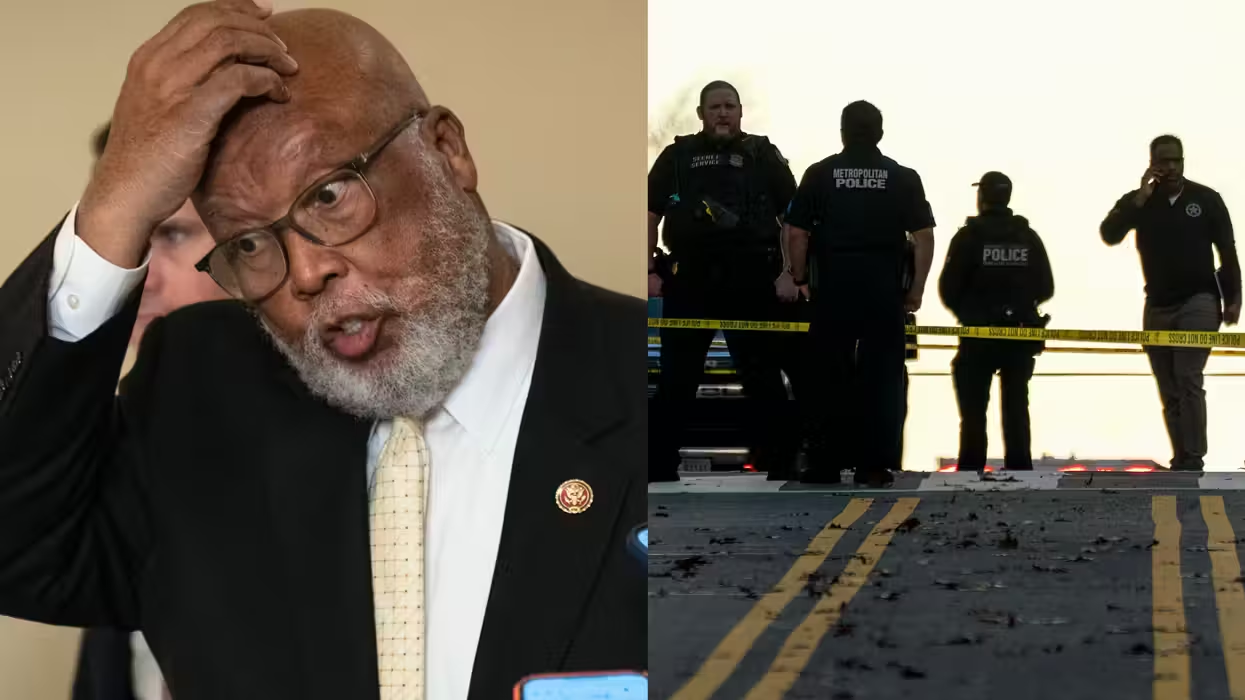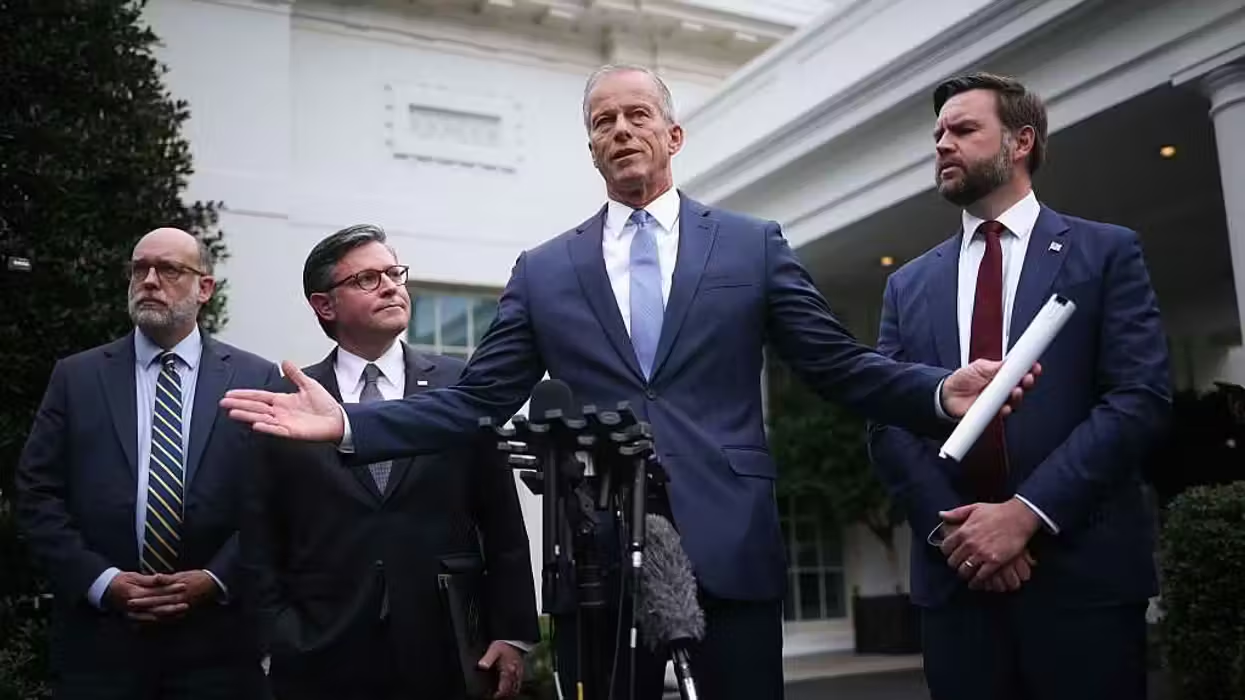
© 2025 Blaze Media LLC. All rights reserved.
While the idea of airborne drones policing America’s streets may seem far-fetched, like something out of a sci-fi movie, it is now our new reality.
More than a year after Congress passed and President Obama signed into law the FAA Reauthorization Act, which mandates that the Federal Aviation Administration create a comprehensive program for the integration of drone technology into the national air space by 2015, drones—pilotless, remote controlled aircraft that have been used extensively in Iraq, Afghanistan and Pakistan to assassinate suspected terrorists, as well as innocent civilians—are suddenly making headlines.
Most recently, FBI director Robert Mueller’s revealed that the government has been using drones to conduct surveillance on U.S. soil. Yet this should surprise no one. Indeed, I’ve been warning against it for years, which is why The Rutherford Institute drafted legislation for use by state governments and local municipalities to protect their constituents from exactly such a scenario by prohibiting the use of evidence gathered by surveillance drones from being used in court.
 SIERRA VISTA, AZ - MARCH 07: A Predator drone operated by U.S. Office of Air and Marine (OAM), takes off for a surveillance flight near the Mexican border on March 7, 2013 from Fort Huachuca in Sierra Vista, Arizona. (Credit: Getty Images)
SIERRA VISTA, AZ - MARCH 07: A Predator drone operated by U.S. Office of Air and Marine (OAM), takes off for a surveillance flight near the Mexican border on March 7, 2013 from Fort Huachuca in Sierra Vista, Arizona. (Credit: Getty Images)
As the past few weeks have shown, the government has no qualms about violating the Fourth Amendment’s prohibition on unreasonable searches and seizures when it suits its purpose. If the National Security Agency has no qualms about spying on Americans’ phone calls and emails, why would the FBI be any less inclined to spy on Americans from the skies?
We are entering an entirely new era of surveillance and domestic police tactics, one in which no person is safe from the prying eyes of the government or the reach of its weapons. By 2020, it is anticipated that there will be 30,000 drones crisscrossing the skies of America, all part of an industry that will be worth hundreds of millions of dollars per year.
The power of these machines is not to be underestimated. Many are equipped with cameras that provide a live video feed, as well as heat sensors and radar. Some are capable of peering at figures from 20,000 feet up and 25 miles away. They can also keep track of 65 persons of interest at once.
Some drones are capable of hijacking Wi-Fi networks and intercepting electronic communications such as text messages. The military has developed drones with facial recognition software, as well as drones that can complete a target-and-kill mission without any human instruction or interaction.
While there are undoubtedly legitimate uses for drone technology domestically, such as locating missing persons, as Director Mueller acknowledged, domestic drones are moving to the forefront of the government’s aerial surveillance efforts. And while these particular drones may not, at this time, be armed with the lethal weaponry that is currently being used overseas in Afghanistan and Pakistan, it’s only a matter of time.
In any case, even armed with “less-lethal” weaponry, drones can be devastating to those attempting to exercise their basic First Amendment rights. Indeed, outfitted with the latest in high-definition cameras and crowd control technology such as impact rounds, chemical munitions rounds and tasers, drones will eventually be star players in the government’s efforts to clamp down on protest activities and keep track of protesters. The Shadowhawk drone, which is already being sold to law enforcement agencies throughout the country, is outfitted with lethal weapons, including a grenade launcher or a shotgun, and weapons of compliance, such as tear gas and rubber buckshot.
These are not really new developments. As far back as the 1970s, the CIA was working on an “insectothopter,” a gasoline-powered dragonfly-style aerial surveillance drone. And as early as 2007, protesters in Washington, D.C., spotted dragonfly-like drones monitoring their activity. Developments in technology and policy suggest that the sighting was probably one of the first real-world tests of these devices.
As with just about every freedom-leeching, technology-driven government policy inflicted on us by Congress and the White House in recent years, from whole-body scanners in airports to RFID chips in our passports and drivers licenses, the mass introduction of drones into domestic airspace has one main goal: to empower the corporate state by controlling the populace and enriching the military industrial complex.
The varied expressions of the government’s growing power—the excessive use of tasers by police on non-threatening individuals, allowing drones to take to the skies domestically for purposes of surveillance and control of free speech protesters, the NSA’s monitoring of emails and phone calls, and on and on—which get more troubling by the day, are merely the outward manifestations of an inner, philosophical shift underway in how the government views not only the Constitution and the Bill of Rights, but “we the people,” as well. Mind you, in the face of the government’s growing power, we are all lumped into the same category. We are all suspects: potential nuisances and rabble rousers who must be surveilled, silenced and, if necessary, shut down.
What this reflects is a movement away from governmental officials who are bound by the rule of law. As I document in my new book, A Government of Wolves: The Emerging American Police State, if not checked, it will inevitably lead to a government that seeks total control over the populace through the imposition of its own self-serving laws on the citizenry—laws carried out by a police force hired to do the government’s bidding and upheld by a judiciary more concerned with legalism, statism, corporatism and elitism than with preserving the rights of the people.
One thing is clear: while the idea of airborne drones policing America’s streets may seem far-fetched, like something out of a sci-fi movie, it is now our new reality. It’s just a matter of how soon you can expect them to be patrolling your own neighborhood. The crucial question, however, is whether Americans will be able to limit the government’s use of such tools of surveillance and compliance or whether we will be caught in an electronic nightmare from which there is no escape. In the meantime, all you can do is keep your eyes on the skies. As Peter W. Singer, a military analyst for the Brookings Institution, recognizes, “There’s no stopping this technology. Anybody who thinks they can put this genie back in the box—that’s silliness.”
--
More Contributions From TheBlaze:
Want to leave a tip?
We answer to you. Help keep our content free of advertisers and big tech censorship by leaving a tip today.
Want to join the conversation?
Already a subscriber?
more stories
Sign up for the Blaze newsletter
By signing up, you agree to our Privacy Policy and Terms of Use, and agree to receive content that may sometimes include advertisements. You may opt out at any time.
Related Content
© 2025 Blaze Media LLC. All rights reserved.
Get the stories that matter most delivered directly to your inbox.
By signing up, you agree to our Privacy Policy and Terms of Use, and agree to receive content that may sometimes include advertisements. You may opt out at any time.






